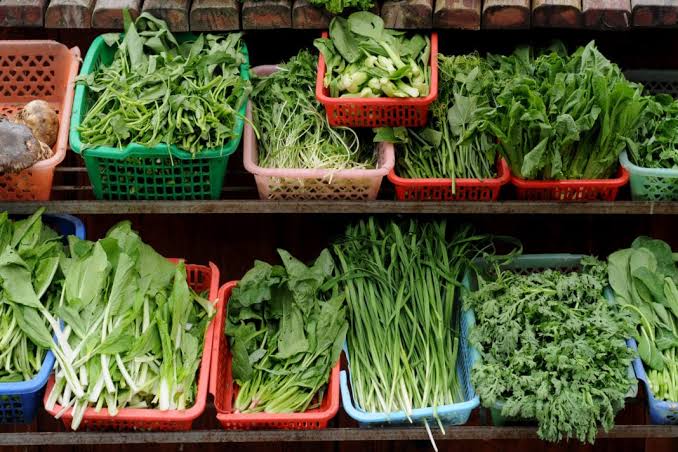
- Nitrates are abundant in some leafy greens and other vegetables, such as beet.
- According to a report, eating a cup of these vegetables every day will help lower blood pressure and lower the risk of heart disease.
- Over the course of 23 years, the researchers looked at the eating patterns and wellbeing of over 50,000 individuals.
- According to the report, a cup of raw vegetables of this kind per day is sufficient for optimum health benefits.
Individuals who want to improve their heart health know that eating vegetables on a regular basis is important.
According to a new study from Edith Cowan University (ECU) in Joondalup, Western Australia, leafy greens and other nitrate-rich vegetables have major cardiovascular benefits.
Researchers discovered that eating a cup of nitrate-rich vegetables every day is linked to improved heart health.
Our results have shown that, by simply eating 1 cup of raw (or half a cup of cooked) nitrate-rich vegetables each day, people may be able to significantly reduce their risk of cardiovascular disease.”
– lead author Dr. Catherine Bondonno from ECU’s Institute for Nutrition Research
Spinach, lettuce, arugula (also known as rocket), Chinese cabbage, and parsley are all green leafy vegetables rich in nitrates. Radishes, fennel, and beet are examples of non-leafy vegetables high in nitrates.
Cooking decreases a vegetable’s nitrate content by about half, according to the researchers, but this is still enough to benefit heart health.
“The largest reduction in risk was for peripheral artery disease — 26 percent,” Dr. Bondonno said, referring to a form of heart disease marked by the narrowing of blood vessels in the legs. “However, we discovered that people have a lower risk of heart attacks, strokes, and heart failure,” she said.
The results are in line with four previous studies, according to the scientists.
Every year, about 17.9 million people die from heart disease around the world. According to the Centers for Disease Control and Prevention (CDC), it is the leading cause of death for “men, women, and citizens of most racial and ethnic groups” in the United States.
Every year, approximately 655,000 people in the United States die of heart disease, accounting for one out of every four deaths in the world.
The results of the analysis were published in the European Journal of Epidemiology.
A long-term investigation
The researchers looked at data from 56,468 Danish citizens who took part in the Danish Diet, Cancer, and Health Study over a 23-year period. Both participants completed a food frequency questionnaire, and the results were compared to public health reports.
People in the highest fifth of vegetable nitrate intake had a 2.58 mm Hg (millimetres of mercury) lower systolic blood pressure — the first value in a blood pressure reading — than those in the lowest intake category, according to the study (after adjustments for possible confounding differences between the groups).
The more nitrate you consume, the lower your blood pressure would be. The top intake group consumed 141 milligrammes (mg) of nitrate per day on average. This is the same as consuming 2–2.5 cups of leafy vegetables a day.
In comparison, the effect of nitrate consumption on hospitalizations for all forms of cardiovascular disease (CVD) reached a 59 mg per day plateau. It didn’t get any better with more nitrate.
Overall, relative to those with the lowest nitrate consumption, which was 23 gm per day, there was a 15% drop in CVD admissions over the 23 years of follow-up. Hospitalizations for peripheral artery disease saw the largest decrease in risk, with a 26 percent reduction.
Dr. Edo Paz of K Health, who was not involved in the research, told Medical News Today that the study is important because of its large sample size and long follow-up duration.
“However,” he pointed out, “this is an observational analysis, and as a result, there are some important limitations.” He elaborated:
“In particular, it is highly likely that people who eat vegetables have other healthy behaviors that are different than those people who do not eat vegetables. For instance, these participants may be more likely to maintain a healthy weight, exercise more, smoke less, etc. Even though the authors try to account for these variables, this is still a key limitation inherent to observational studies in general.”
– Dr. Edo Paz
Just a cup
According to the report, a cup of raw or half-cup of cooked green leafy vegetables of this kind per day is about the right amount for long-term heart health. “We didn’t see any additional benefits in people who consumed more nitrate-rich vegetables,” Dr. Bondonno said.
“People don’t need to take supplements to raise their nitrate levels,” Dr. Bondonno said, “because the study found that eating one cup of leafy green vegetables a day is enough to reap the benefits for heart disease.”
“It’s essential to note that anything should be eaten or consumed in moderation,” Dr. Paz told MNT. When large amounts of nitrate are consumed, it may cause methemoglobinemia, a disease in which red blood cells lose their capacity to transport oxygen.”
“Fortunately, methemoglobinemia is uncommon, with nitrate contamination in drinking water being the most common cause.”
Dr. Bondonno advises against juicing vegetables if you want to get the most nitrates out of them, since juicing eliminates the pulp and fibre.
Blending vegetables, on the other hand, is appropriate. She suggests mixing a cup of spinach into a berry smoothie as a simple and fun way to get people to eat their vegetables.







